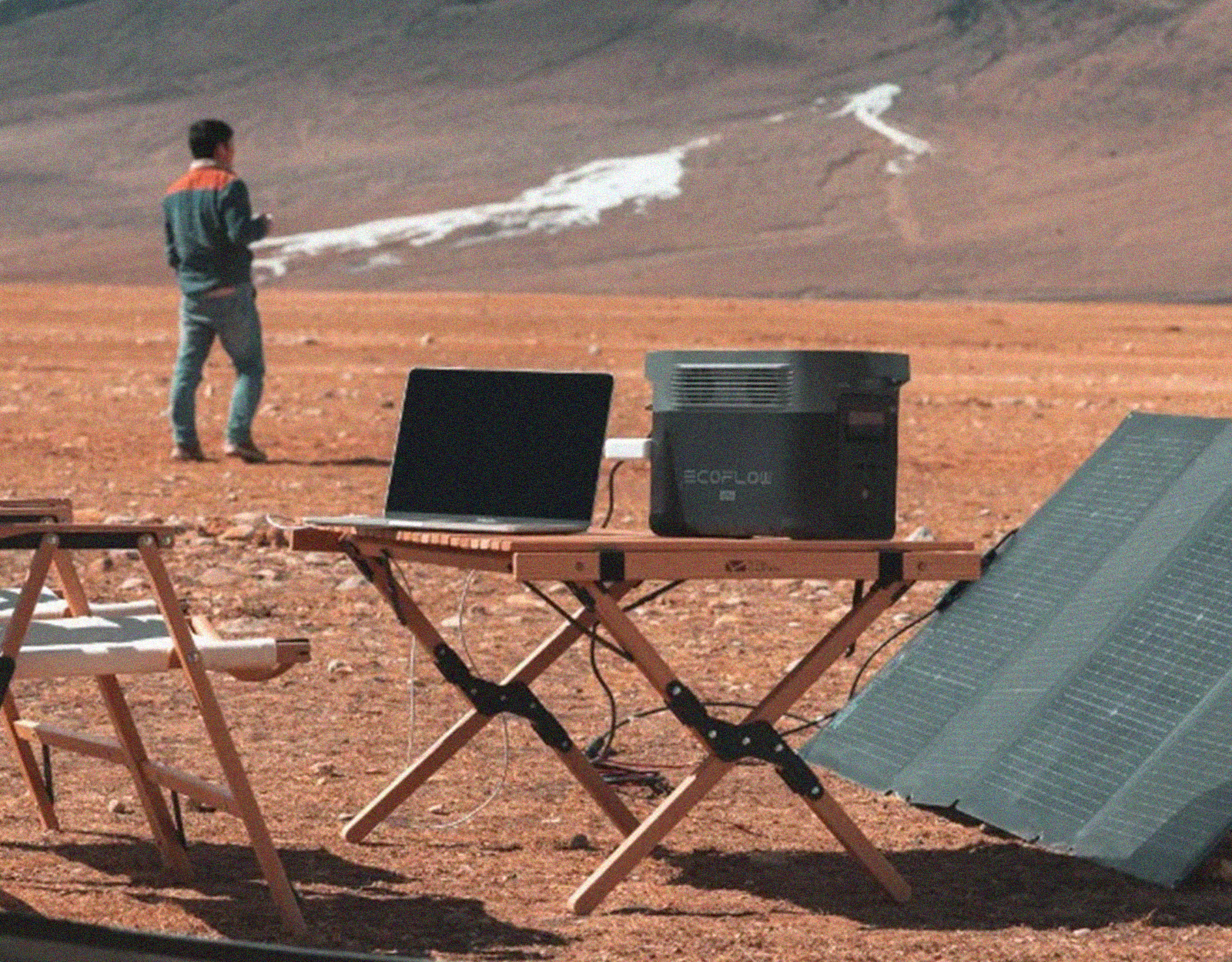Portable Power Stations Buyers Guide
When you want to off-road to get off-grid and “unplug” we sometimes mean that in a rhetorical sense. We unplug from the stresses of work, the daily grind, or a myriad of other responsibilities that can’t follow us on our outdoor adventures. But sometimes we do need a way to plug in to power up a few niceties or necessities during an overlanding trip. Whether it’s auxiliary lighting or to recharge our phones, or quite importantly to power CPAP sleep therapy machines overnight, having a portable power station in camp can literally brighten things up.
Below we discuss what to look for when shopping for a portable power station, help you know what wattage you might need, which brands are out there, and a few other tips and tricks. Here’s our buyer’s guide to portable power stations.
What Is a Portable Power Station?
Unlike a loud, gas-powered generator, power stations (also called power banks, solar powered generators, battery-powered inverter generators, etc.) offer quiet, rechargeable energy that can do many, but not all, things a gas generator can do (more on that shortly).
Acting like oversized rechargeable batteries with an inverter, portable power stations take the DC (direct current) energy from the battery and convert it to AC (alternating current) so it can power devices. Lithium-ion (Li-Ion), lithium-polymer (Li-Po), and lead-acid batteries are the most common batteries used in portable power stations.
Nearly all of today’s portable power stations have multiple ports, including standard 110V, USB-A, USB-C, a car port, and perhaps others. They can be recharged by plugging into a standard outlet or by attaching one or more solar panels (on select models).

Gas-Powered Generators Vs. Rechargeable Power Stations
Aside from the most obvious difference between the two, one requiring gas or diesel and the other using a rechargeable battery, there are big differences in each one’s power, size, and where it can be used.
Gas-powered generators rely on fuel combustion to produce electricity, and one of its byproducts is the emission of carbon monoxide (CO), a colorless and odorless gas. Carbon monoxide is deadly, and it’s recommended that gas generators are kept at least 20 feet away from houses, garages, or off-road campers, with its exhaust pointed away from any doors or windows. It’s estimated that one portable generator can emit as much carbon monoxide as 400 idling cars.
The other byproduct of gas combustion is noise. A mid-to-large sized portable gas generator produces mid-70 to mid-80 dBA, but some can be as loud as 100 dBA (nearly as loud as a chainsaw). Noise above 70 dB over a prolonged period of time may start to damage your hearing.
Portable power stations are much quieter than gas generators, though not altogether silent. Their cooling fans and components can produce a low hum or whirring sound during their operation, especially when under heavy loads.
These rechargeable power stations also do not emit harmful gasses, so they can be brought into and used inside campers, vehicles, and tents. This is why they are one of the best options for anyone who needs to power a CPAP machine overnight.
There is a drastic difference between the size and weight of gas generators compared to portable power stations. Gas generators are commonly between 150-300 pounds each; while the Jackery Explorer 1000, as an example, only weighs 22 pounds.
Where gas generators excel is their power output. Gas generators have an average output of 4,000 to 12,000 watts per hour. Most portable power stations have an energy output between 250 to 3,000 watts per hour.

What Are Watts?
A watt describes the rate of power flow and is equal to 1 joule per second. In electrical terms, a watt is the rate at which electrical work is done when one ampere (A) of current flows through one volt (V). As an electrical current flows through a resistance, heat results. This heat can then be measured in watts and represents electrical power.
To get an idea of how much power different appliances and devices consume, a refrigerator needs 700 watts of continuous power, with peaks up to 2,200 watts. A small space heater needs 350 watts of continuous current.
When you’re shopping for a portable power station you’ll likely come across another term: watt hours (Wh), or even milliwatt-hours (mWh). One watt hour is equal to one watt of average power flow over an hour, so one watt over four hours would be four watt hours (Wh) of power. This is super helpful for understanding how long you can run or charge a particular device with your power station. In fact, there’s a way to calculate this*:
T=10∗a/w
- T is the time in hours
- a is the amp hours (or battery capacity)
- w is the power usage of a device
Here’s how that equation works, but first we have to convert amp hours into watt hours. That is as simple as dividing the number of watt hours by the volts of the power source. If you have a portable power station with a 1000Wh capacity and a standard 12V battery (the most common in deep cycle batteries), you divide 1000/12 =83.333. So for your equation above a=83.33.
Now, let’s say you have that portable power station with a 1000Wh capacity and you’re running a CPAP machine that consumes 50 watts (per hour).
10∗83.33/50 = 16.66 hours
You can run your machine for over 16 hours, maximum, before needing to recharge your power station. However, not all battery sources are perfectly efficient. Most calculate their efficiency for held energy at 85-95%, which would mean 16.66 hours is really a hair under 15 hours of actual power.
*This is a lot of math we know. Most brands will have an embedded Run Time Calculator on their product pages.

Portable Power Station Brands
Jackery has been in the portable power industry for a long time. Founded in 2012 in California by a previous Apple battery engineer, they claim to have been the first to create a portable, outdoor power station with a lithium battery in 2016, and two years later the first to introduce solar generators to the outdoors.
They have a strong lineup of products, and I have personally been using the Jackery Explorer 1000, with solar panels for recharging, for about a year now and find it very reliable and perfect for nearly all my off-grid needs.
Since 2009 Goal Zero has been a leader in renewable power. They are quite well known for their Yeti X line of portable power stations, which includes an incredibly powerful Yeti Pro 8000 (with 8000Wh). Plus Goal Zero products can often be “stacked” for additional power.
A relative newcomer to the portable power scene, BLUETTI launched in 2020. These power stations are also modular, meaning you can divide them up to supply power in different places. Plus BLUETTI’s technology can be controlled via a smartphone app through Wi-Fi and Bluetooth. They also have a long life-expectancy, up to 3,500 life cycles of charging.
EcoFlow got its start around 2017 and offers home power stations as well as portable and solar generators. Some of their strongest products are capable of running central AC units and full-size refrigerators for multiple days.
Tips for Getting the Most Out of Your Portable Power Station
To limit surprises and running out of energy, make a list of the appliances and devices you plan on powering or recharging during your trip. Then calculate each one’s power consumption in watts so you know how much time you can run them.
Use low-power devices or settings whenever possible, like switching to airplane mode while charging your smartphone. And remember, LED lights use a lot less power than traditional incandescent bulbs. CPAPs with heated hoses require a lot more energy consumption, so consider turning the heating feature off if you need to conserve power.
Several instruction manuals suggest completely discharging and recharging your unit every three months, and keeping it at a 60% charge if storing it for a period.
A last word of advice: get as much power capacity as you can afford, even if it’s more than you need. You might not know what future device you’ll have and when you have it you’ll wish you had a bigger power station to run it.